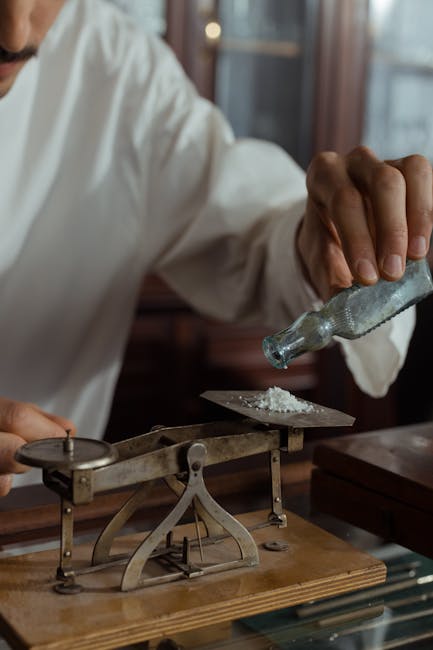Have you recently resurfaced your pool and now find yourself wondering how to balance its chemistry? Don’t worry, we’ve got you covered! When it comes to maintaining a healthy and pristine swimming pool, maintaining the right chemical balance is crucial.
After resurfacing your pool, the chemicals can often be thrown off, requiring some adjustments to get things back on track. Balancing pool chemistry after resurfacing is an essential step to ensure that your water remains clean, safe, and sparkling.
In this article, we will dive into the ins and outs of balancing pool chemistry after resurfacing. From understanding the importance of pH levels and alkalinity to tips on adjusting chlorine and other chemical levels, we’ll provide you with all the information you need to keep your pool in top shape. So, let’s jump right in and make pool maintenance a breeze!
How to Balance Pool Chemistry after Resurfacing:
- Test the water using a pool test kit.
- Adjust the pH levels with pH increaser or decreaser.
- Check and adjust the alkalinity levels using alkalinity increaser or decreaser.
- Stabilize the chlorine levels by adding stabilizer or cyanuric acid.
- Balance calcium hardness levels by adding calcium increaser or remover.

Balancing Pool Chemistry after Resurfacing: A Comprehensive Guide
When it comes to maintaining a pristine and inviting swimming pool, proper chemical balance is essential. This is especially true after pool resurfacing, as the new surface requires specific care and attention to ensure longevity and optimal water quality. In this comprehensive guide, we will dive deep into the process of balancing pool chemistry after resurfacing, providing you with all the knowledge and tips you need to keep your pool looking and feeling its best. So, let’s jump in and explore the world of pool chemistry post-resurfacing!
1. Why is Pool Chemistry Important after Resurfacing?
After a pool resurfacing project, the newly applied finish requires adequate time to cure and bond with the underlying structure. During this critical phase, it is crucial to maintain proper pool chemistry to promote the durability and longevity of the resurfaced surface. By ensuring the correct chemical balance, you can prevent issues such as staining, etching, or delamination of the new finish. Additionally, maintaining balanced chemistry ensures optimal water clarity, hygiene, and swimmer comfort. Let’s explore the key elements of pool chemistry that need attention after resurfacing.
The Importance of pH: pH is a fundamental parameter of pool water chemistry that affects water balance and the effectiveness of other chemicals. After resurfacing, it is crucial to monitor the pH level regularly and keep it within the recommended range. Maintaining the correct pH helps prevent the deterioration of the pool surface and ensures the effectiveness of sanitizing agents.
Alkalinity and Total Hardness: Alkalinity acts as a buffer to stabilize the pH level, while total hardness reflects the concentration of minerals in the water. In the post-resurfacing period, maintaining balanced alkalinity and total hardness helps protect the pool surface from damage and minimizes the potential for scaling or corrosion.
Sanitization: The sanitization process is vital to eradicate harmful bacteria, viruses, algae, and other contaminants from the pool water. After resurfacing, it is essential to adjust the chlorine or alternative sanitizing agents to the appropriate levels and regularly monitor their effectiveness. This ensures a safe and healthy swimming environment and prevents any adverse effects on the newly resurfaced pool.
2. Steps to Balancing Pool Chemistry after Resurfacing
Now that we understand the importance of pool chemistry after resurfacing let’s delve into the step-by-step process of achieving and maintaining the perfect chemical balance for your newly resurfaced pool:
Step 1: Allow Sufficient Curing Time
After pool resurfacing, it is crucial to allow the new finish adequate time to cure and bond with the underlying structure. Follow the manufacturer’s guidelines for curing time, which typically ranges from 7 to 28 days. During this period, avoid adding any chemicals or overloading the pool with excessive use.
Step 2: Test and Adjust pH Level
Start by testing the pH level of the pool water using a reliable water testing kit. Ideally, the pH should be maintained between 7.4 and 7.6. If the pH level is too high, add a pH reducer according to the manufacturer’s instructions. Conversely, if the pH level is too low, add a pH increaser. Regularly monitor and adjust the pH level as necessary to maintain balance.
Step 3: Stabilize Alkalinity and Total Hardness
Next, check the alkalinity and total hardness levels of the pool water. Alkalinity should be maintained between 80 and 120 parts per million (ppm), while total hardness should be between 200 and 400 ppm. Use alkalinity increasers or decreasers and calcium hardness increasers or decreasers to reach the desired levels. Follow the product instructions carefully and retest the levels to ensure they are within the recommended range.
Step 4: Sanitize the Pool Water
After balancing the pH, alkalinity, and total hardness, it’s time to sanitize the pool water to ensure it is safe and free from contaminants. Chlorine is the most commonly used sanitizer, but alternatives such as bromine or ozone systems are also effective. Follow the manufacturer’s instructions to adjust the sanitizer levels based on the pool size and water quality. Regularly test the chlorine levels and adjust as needed to maintain a safe and effective sanitizing level.
Step 5: Regular Testing and Maintenance
Once you have achieved the desired chemical balance, don’t forget to regularly test the pool water chemistry and make any necessary adjustments. Aim to test the water at least twice a week and maintain a log of the results to track any patterns or changes. Regular maintenance, including skimming, brushing, and filtration, is also essential to keep the water clean and clear.
3. Tips for Maintaining Balanced Pool Chemistry
To ensure the long-term success of your pool resurfacing project, here are some additional tips for maintaining balanced pool chemistry after resurfacing:
Tip 1: Follow Manufacturer’s Guidelines
Always refer to the specific guidelines provided by the manufacturer of your pool finish, as different finishes may have unique requirements. Following these guidelines will help you achieve and maintain the optimum chemical balance for your particular pool surface.
Tip 2: Keep Up with Regular Maintenance
In addition to maintaining balanced chemistry, regular maintenance practices such as cleaning filters, skimming the surface, and brushing the walls help prevent the buildup of debris and potential damage to the pool finish. Dedicate time each week to these tasks to keep your pool looking and performing its best.
Tip 3: Seek Professional Advice
If you are unsure about any aspect of balancing pool chemistry after resurfacing, don’t hesitate to consult a professional pool service technician or water chemistry expert. They can offer specific guidance based on your pool type, finish material, and local water conditions.
By following these steps and tips, you can ensure that your pool chemistry is perfectly balanced after a resurfacing project. Remember, a well-maintained pool not only enhances the beauty of your outdoor space but also provides a clean and enjoyable swimming environment for you and your loved ones. Happy swimming!
Key Takeaways: Balancing Pool Chemistry after Resurfacing
1. After pool resurfacing, test the water for pH and alkalinity levels.
2. Use chemicals like pH increaser or pH decreaser to adjust the pH levels accordingly.
3. Add balancing chemicals to stabilize alkalinity and calcium hardness.
4. Regularly monitor chlorine levels and use a shock treatment if necessary.
5. Consider consulting a professional if you’re unsure about pool chemistry adjustments.
Frequently Asked Questions
Welcome to our FAQ section on balancing pool chemistry after resurfacing! Here, we’ve compiled the most commonly asked questions to help you maintain the perfect chemical balance in your newly resurfaced pool. Read on to find answers to your queries!
1. What are the key chemicals I need to balance in my pool after resurfacing?
After resurfacing your pool, it’s crucial to balance three key chemicals: pH, alkalinity, and calcium hardness. pH measures the acidity or basicity of the water, alkalinity helps stabilize pH levels, and calcium hardness refers to the mineral content in the water.
To achieve proper balance, aim for a pH level between 7.4 and 7.6, alkalinity between 80 and 120 ppm (parts per million), and calcium hardness between 200 and 400 ppm. Testing kits are available to help determine current levels and guide you in adjusting them accordingly.
2. How do I adjust the pH level of my pool after resurfacing?
If the pH level of your pool water is too high, meaning it’s too basic, you can lower it by using a pH decreaser or acid, such as muriatic acid or sodium bisulfate. Follow the instructions on the product’s label and add the recommended amount to your pool water gradually.
On the other hand, if the pH level is too low or acidic, you can raise it by adding sodium carbonate (soda ash) or sodium bicarbonate (baking soda). Again, follow the product instructions and add the appropriate amount, taking care to avoid abrupt changes that could shock the pool system.
3. How can I adjust the alkalinity in my pool after resurfacing?
If the alkalinity in your pool is too high, you can lower it by using an alkalinity reducer. Common options include muriatic acid and sodium bisulfate. Be sure to follow the instructions to determine the correct amount needed for your pool size and current alkalinity level.
Conversely, if the alkalinity is too low, you can raise it by adding an alkalinity increaser, such as sodium bicarbonate (baking soda). Again, follow the product instructions and add the appropriate amount gradually to avoid sudden fluctuations.
4. How can I adjust the calcium hardness in my pool after resurfacing?
To adjust the calcium hardness in your pool after resurfacing, you have a few options. If the calcium hardness level is too high, you may need to partially drain and refill the pool with fresh water to dilute the calcium content. Alternatively, you can use a sequestrant or chelating agent designed to bind with excess calcium and prevent it from causing scaling.
If the calcium hardness is too low, you can raise it by adding calcium chloride to the pool water. Again, follow the product instructions and add the appropriate amount gradually over time.
5. How often should I test and adjust the pool chemistry after resurfacing?
It’s recommended to test your pool chemistry at least once a week after resurfacing. However, you may need to test more frequently initially to ensure the chemicals are properly balanced. Factors such as weather conditions, pool usage, and the specific products you use can all impact the chemistry balance, so regular monitoring is key. If you notice any issues or changes, adjust the chemicals accordingly and retest to maintain a healthy pool environment.

Summary
After resurfacing your pool, it’s important to balance the chemicals properly. First, test the pH levels regularly to ensure they are between 7.2 and 7.8. Next, adjust the alkalinity to maintain a range of 80 to 120 ppm. Be sure to monitor and adjust the chlorine levels as well to prevent bacterial growth. Finally, don’t forget to check the calcium hardness and total dissolved solids (TDS) levels to keep your pool sparkling clean and safe for swimming.
Remember, maintaining the right balance of chemicals in your pool is crucial for the health of both your pool and the people who swim in it. By following these steps and regularly testing and adjusting your pool’s chemistry, you can enjoy clean and clear water all summer long. So don’t forget to take care of your pool and have a splashing good time!
- 5 Fun Things to Do in Jindabyne - April 1, 2024
- 7 Fun Things to Do With Kids at the Park - April 1, 2024
- 5 Fun Things to Do in Owen Sound This Weekend - April 1, 2024



